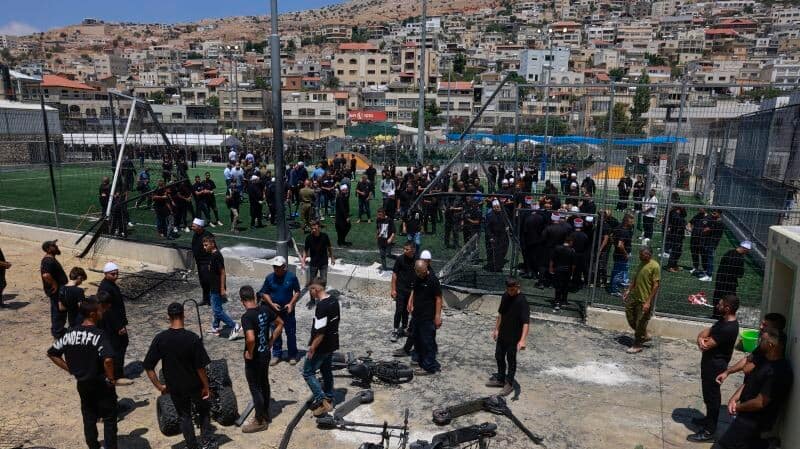
Explained: What's Hezbollah, will it go to war with Israel
What's the story
Tensions between Israel and the Lebanese militant group Hezbollah are on the rise, sparking fears of a potential full-scale war. The escalation follows a rocket attack in the Israeli-occupied Golan Heights, which Israel attributes to Hezbollah. The rocket, reportedly launched from Shebaa in southern Lebanon, struck a soccer pitch in Majdal Shams, resulting in the death of 12 children aged between 10 and 16. Let's understand the worsening situation in the Middle East:
Explained
What is Hezbollah
First, let's understand what Hezbollah, the militant organization, is. Hezbollah, a Shia Muslim group and Lebanon's most powerful armed force, was established by Iran in the early 1980s to resist Israel's occupation of southern Lebanon. Politically influential, Hezbollah has participated in national elections since 1992 and holds a significant political presence in Lebanon.
Armed wing
Hezbollah's strong military presence
Its armed wing has attacked Israeli and United States forces. After Israel's 2000 withdrawal, Hezbollah claimed credit and maintained a strong military presence. Designated a terrorist organization by many Western and Arab states, Hezbollah fought a war with Israel in 2006, emerging stronger with more fighters and advanced weaponry.
Sheikh Hassan Nasrallah
Who is Hezbollah's leader
Sheikh Hassan Nasrallah, a Shia cleric, has led Hezbollah since 1992, transforming it into both a political and military force. He has strong ties with Iran and its Supreme Leader, Ayatollah Ali Khamenei, dating back to 1981 when Ayatollah Ruhollah Khomeini appointed him as his personal representative in Lebanon. Nasrallah has avoided public appearances for years, likely due to fears of Israeli assassination. Nevertheless, he remains highly revered by Hezbollah and delivers weekly televised speeches.
Heavily-armed
Hezbollah's military capacity
Hezbollah is among the world's most heavily-armed non-state military forces, funded and equipped by Iran. Nasrallah claims it has 1,00,000 fighters, but estimates peg it at 20,000-50,000. According to the Center for Strategic and International Studies, Hezbollah has 120,000-200,000 rockets and missiles, mostly small, unguided surface-to-surface rockets, but also possesses anti-aircraft, anti-ship, and guided missiles capable of reaching deep inside Israel, making its arsenal more advanced than that of Hamas in Gaza.
Relations
Hezbollah-Israel tensions
On October 8, following an unprecedented Hamas attack on Israel, Hezbollah escalated its sporadic fighting by firing at Israeli positions in solidarity with Palestinians. Since then, Hezbollah has launched rockets at northern Israel and the Golan Heights, fired anti-tank missiles at armored vehicles, and used explosive drones against military targets. The Israel Defense Forces (IDF) have responded with airstrikes, tank fire, and artillery strikes targeting Hezbollah positions in Lebanon.
Casaulties
Attacks on Israel, Lebanon
The United Nations reports that over 90,000 people in Lebanon have been displaced due to attacks, with around 100 civilians and 366 Hezbollah fighters killed by Israeli strikes. In Israel, officials state that 60,000 civilians have abandoned their homes, and 33 people have been killed by Hezbollah's attacks. Despite ongoing hostilities, observers note that both sides have so far tried to avoid a full-scale war. However, the death of 12 children could cause the situation to snowball into a war.